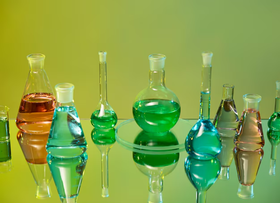15 Advantages Of Aroma Chemicals For Dyeing Industry

Aroma chemicals are essential to the dyeing industry because they improve processes and final products in a number of ways. These substances are essential to contemporary dyeing techniques since they improve everything from fragrance to dye dispersion. The relevance and influence of aroma chemicals in the dyeing business are highlighted in the following list of 15 benefits.
What is Aroma Chemicals?
Aromatic chemicals, which can be called odorants or aroma chemicals, are mainly concerned with improving the taste or scent of products. These are materials that imitate the natural scents of fruits, flowers, plants, and everything else with synthetic ingredients. Aroma components are critical for the food and beverage, cosmetics, perfumery, and home products sectors.
These components are skillfully combined to release uncommon fragrances, which allow the industry to offer numerous personalized fragrances. The chemicals that are aromatic play an important role in the perfumery and flavor industries, as they are usually preferred to natural essences due to their stability, uniformity, and affordability.
Key Benefits of Aroma Chemicals
Enhanced Fragrance:
Aromatic chemicals are known for their ability to give textile products a pleasing fragrance. These chemicals enable textile manufacturers to generate textiles with pleasing fragrances that attract customers and make the final products look better in general.
Better Dye Penetration:
Aromatic chemicals will assist the dyes in the process of adhering to textile fibers. As a result, they are bright and resist fading, ensuring that the fabrics dyed with these colors will always keep their freshness.
Shorter Processing Times:
The utilization of aroma chemicals in the dyeing process can simplify the process and sufficiently decrease the time spent in producing the final product (dyed fabric). Manufacturers who need to compete in the marketplace through their fast response to customer demands and better production schedules would make use of this productivity bonus.
Cost-Effectiveness:
When you buy Aroma chemicals provide an affordable way to achieve the required dyeing and scent effects. Their effective usage reduces the cost of materials and improves resource utilization, which helps textile companies save money overall.
Versatility:
Due to their remarkable adaptability, these chemicals can be dyed on a wide variety of fabrics, such as polyester or even natural fibers, such as cotton. It becomes possible to use them in addition to many textile items due to their adjustability.
Stain Resistance:
A few aroma chemicals have characteristics that help clothes resist stains. This improves the endurance and durability of the dyed materials and is especially useful in situations when textiles are exposed to possible staining agents.
Environmental friendliness:
A lot of the fragrance components are safe for the environment and comply with rules. Textile producers may lessen their environmental impact and support sustainable practices by employing these chemicals.
Long-Lasting Fragrance:
Aroma chemicals are made to provide textile aromas that stay for a long time, so the smell is retained even after several washings. Customers’ perception of the items’ quality is improved by their endurance.
Compatibility with Dyeing Processes:
These chemicals work well with both traditional and advanced dyeing procedures, including digital printing. Their adaptability to various production configurations is improved by this interoperability.
Customization Options:
Aroma chemicals can be used by textile producers to alter the scent character of their products. This degree of personalization enables firms to stand out from the competition and satisfy certain customer needs.
Decreased Chemical Usage:
Textile producers can lower the total amount of some dyeing chemicals they use by selectively utilizing fragrance compounds. By doing this, chemical intake is maximized but possible environmental effects of excessive chemical use are reduced.
Enhanced Softness:
Certain aroma chemicals make textiles softer and more lavish, which improves end users’ comfort. This softness feature is very useful for textile applications like clothing and home furnishings.
Better Color Fastness:
Aroma chemicals help dyed fabrics have better color fastness, which keeps colors vibrant and resistant to fading or running. Sustaining both customer pleasure and product quality depends on this durability element.
Compatibility with Textile Finishes:
Manufacturers can mix scent enhancement with other desirable finishing effects, such as moisture control or wrinkle resistance, by incorporating aroma compounds into a variety of textile finishing procedures.
Global Distribution:
Textile producers across the world can readily acquire aromatic chemicals due to their widespread availability in the global market. This availability makes easy integration into manufacturing operations possible and guarantees reliable supply chains.
Conclusion
In conclusion, the dyeing sector can profit greatly from aromatic chemicals in a variety of ways, from process efficiency and environmental compliance to scent improvement. Their cost-effectiveness, adaptability, and capacity to improve product qualities make them essential elements in contemporary textile production. Textile firms can enhance the quality, sustainability, and attractiveness of their products in the competitive market by utilizing aroma chemicals, as well as associating with a firm who are interestingly carrying the ‘aromatic chemicals for sale’ board.




